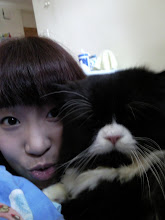The brand was launched in 1967 when Ralph Lauren, born Ralph Lifschitz, got a $50,000 loan. Prior to starting Ralph Lauren, he worked for Brooks Brothers. In 1968 he started a line of men's ties. By 1969 he had a boutique store within the Manhattan department store Bloomingdale's. In 1971, Polo Ralph Lauren launched its first women's collection and his first standalone store in Beverly Hills, California. Ten years later, in 1981, the brand went global with its first international store on London's New Bond Street. The Polo Sport line was introduced in 1993.
The brand now produces clothing, accessories, fragrances, furniture, operates the restaurant RL in Chicago, and sponsors a Harlem cancer center in association with Memorial Sloan-Kettering Cancer Center. The flagship store is located in the former Rhinelander Mansion on Madison Avenue in New York City.
Other flagship stores are located in Chicago, East Hampton, London, Miami, Milan, Palm Beach, and Tokyo.
Ralph Lauren is one of the largest fashion designer/retailers in the United States, with sales almost reaching 2 billion pounds per year.
See: http://en.wikipedia.org/wiki/Polo_Ralph_Lauren
2009年2月6日 星期五
Mass customerization
In our group discussion, all our group members didn't understand what means by 'Mass Customerization'. I have searched about the meaning of it.
From Wekipedia:
Mass customization, in marketing, manufacturing, and management, is the use of flexible computer-aided manufacturing systems to produce custom output. Those systems combine the low unit costs of mass production processes with the flexibility of individual customization.
"Mass Customization" is the new frontier in business competition for both manufacturing and service industries. At its core is a tremendous increase in variety and customization without a corresponding increase in costs. At its limit, it is the mass production of individually customized goods and services. At its best, it provides strategic advantage and economic value.”
The concept of mass customization is attributed to Stan Davis in Future Perfect[1] and was defined by Tseng and Jiao (2001, p. 685) as "producing goods and services to meet individual customer's needs with near mass production efficiency". Andreas Kaplan and Michael Haenlein concurred, calling it "a strategy that creates value by some form of company-customer interaction at the fabrication and assembly stage of the operations level to create customized products with production cost and monetary price similar to those of mass-produced products".
From Wekipedia:
Mass customization, in marketing, manufacturing, and management, is the use of flexible computer-aided manufacturing systems to produce custom output. Those systems combine the low unit costs of mass production processes with the flexibility of individual customization.
"Mass Customization" is the new frontier in business competition for both manufacturing and service industries. At its core is a tremendous increase in variety and customization without a corresponding increase in costs. At its limit, it is the mass production of individually customized goods and services. At its best, it provides strategic advantage and economic value.”
The concept of mass customization is attributed to Stan Davis in Future Perfect[1] and was defined by Tseng and Jiao (2001, p. 685) as "producing goods and services to meet individual customer's needs with near mass production efficiency". Andreas Kaplan and Michael Haenlein concurred, calling it "a strategy that creates value by some form of company-customer interaction at the fabrication and assembly stage of the operations level to create customized products with production cost and monetary price similar to those of mass-produced products".
Class exercise no.2 (b)
Designing a feedback form:
1. Do you like dark colour or warm colour?
2. Do you think red represents confidence?
3. How do you feel about pale colour?
4. Which one do you prefer? Black or white?
5. Which colour will you choose for a formal suit? Black, blue, grey or white?
6. Will you make a hair colour treatment?
1. Do you like dark colour or warm colour?
2. Do you think red represents confidence?
3. How do you feel about pale colour?
4. Which one do you prefer? Black or white?
5. Which colour will you choose for a formal suit? Black, blue, grey or white?
6. Will you make a hair colour treatment?
Class Exercise no.2 (a)
Schoolmate A
Liftstyle: Always wearing sharp and attractive clothes, but she would not wear animal print. Her wearing style is girlish and sytlish and never been sporty.
Colour preferences: Red and sharp blue.
Schoolmate B
Lifestyle: She likes shopping especially those shopping malls in Tsim Sha Tsui, Causeway bay and Mongkok. She also likes reading fashion magazine.
Colour preferences: Black and white, purple.
Schoolmate C
Lifestyle: She likes mix and match style and Japanese culture. Dolls and comics are her favourite items, those she always keeps eyes on. Furthermore, she likes investigate make up.
Colour Preferences: Black and white, red, peach, brown, grey.
Liftstyle: Always wearing sharp and attractive clothes, but she would not wear animal print. Her wearing style is girlish and sytlish and never been sporty.
Colour preferences: Red and sharp blue.
Schoolmate B
Lifestyle: She likes shopping especially those shopping malls in Tsim Sha Tsui, Causeway bay and Mongkok. She also likes reading fashion magazine.
Colour preferences: Black and white, purple.
Schoolmate C
Lifestyle: She likes mix and match style and Japanese culture. Dolls and comics are her favourite items, those she always keeps eyes on. Furthermore, she likes investigate make up.
Colour Preferences: Black and white, red, peach, brown, grey.
訂閱:
意見 (Atom)
